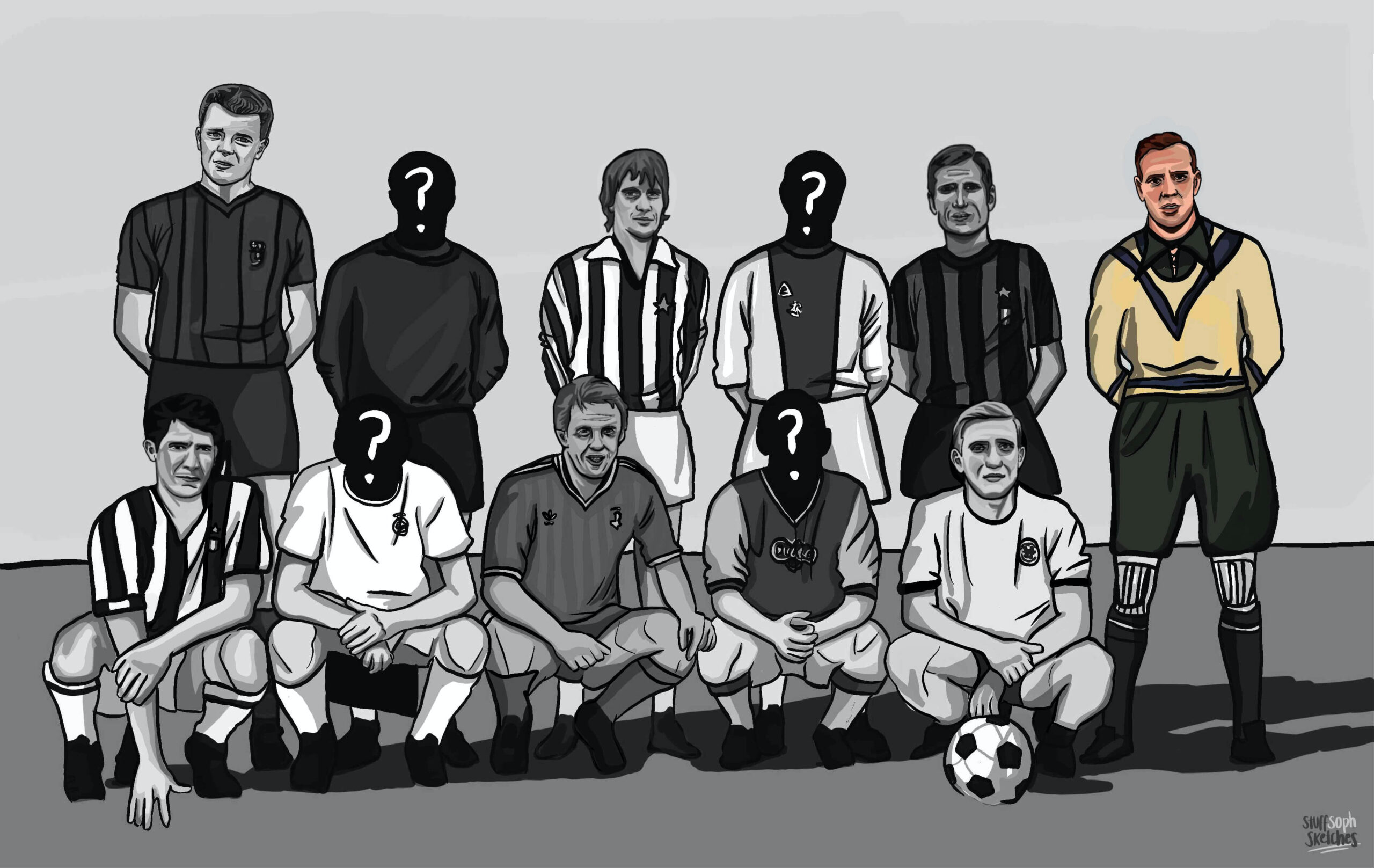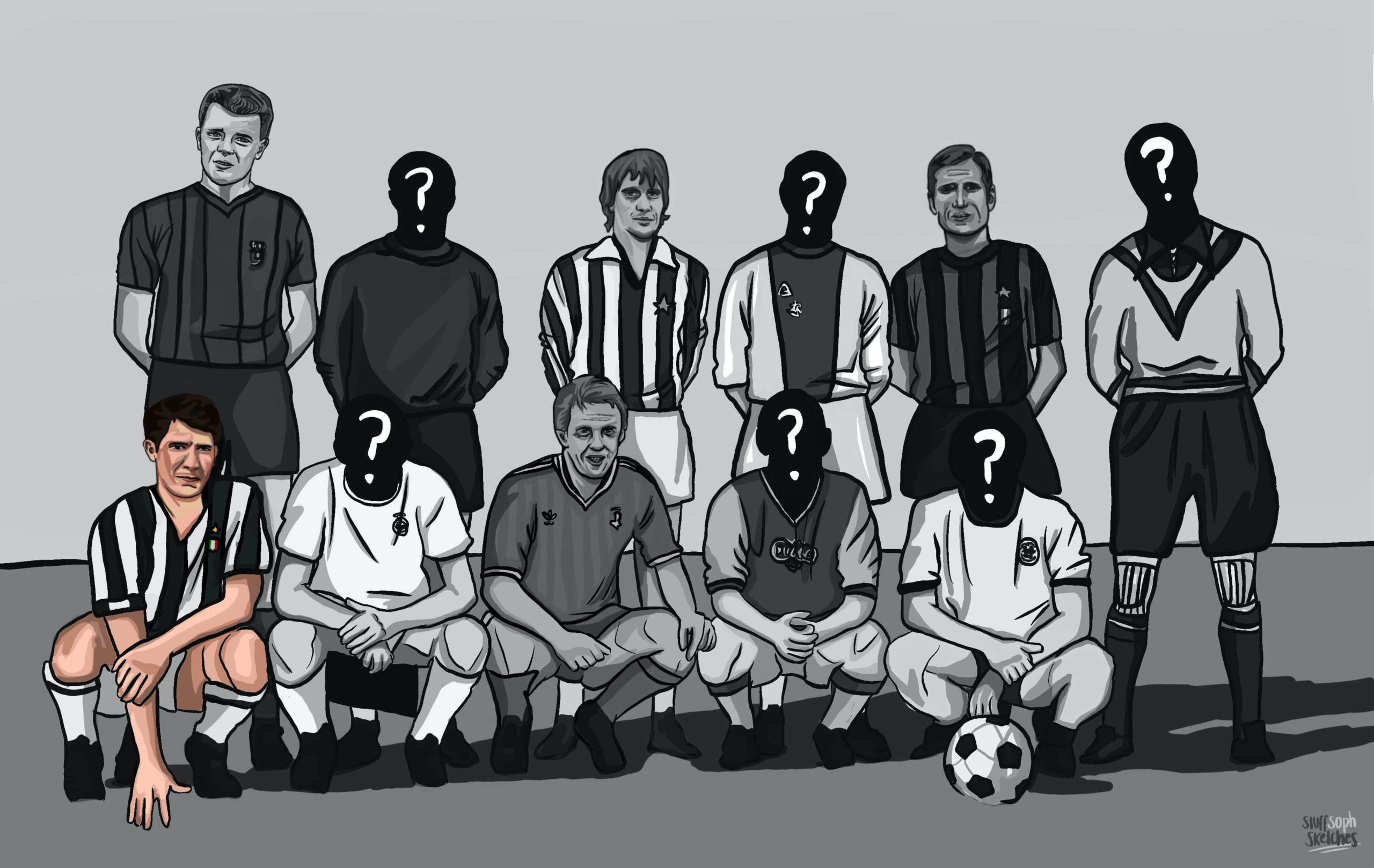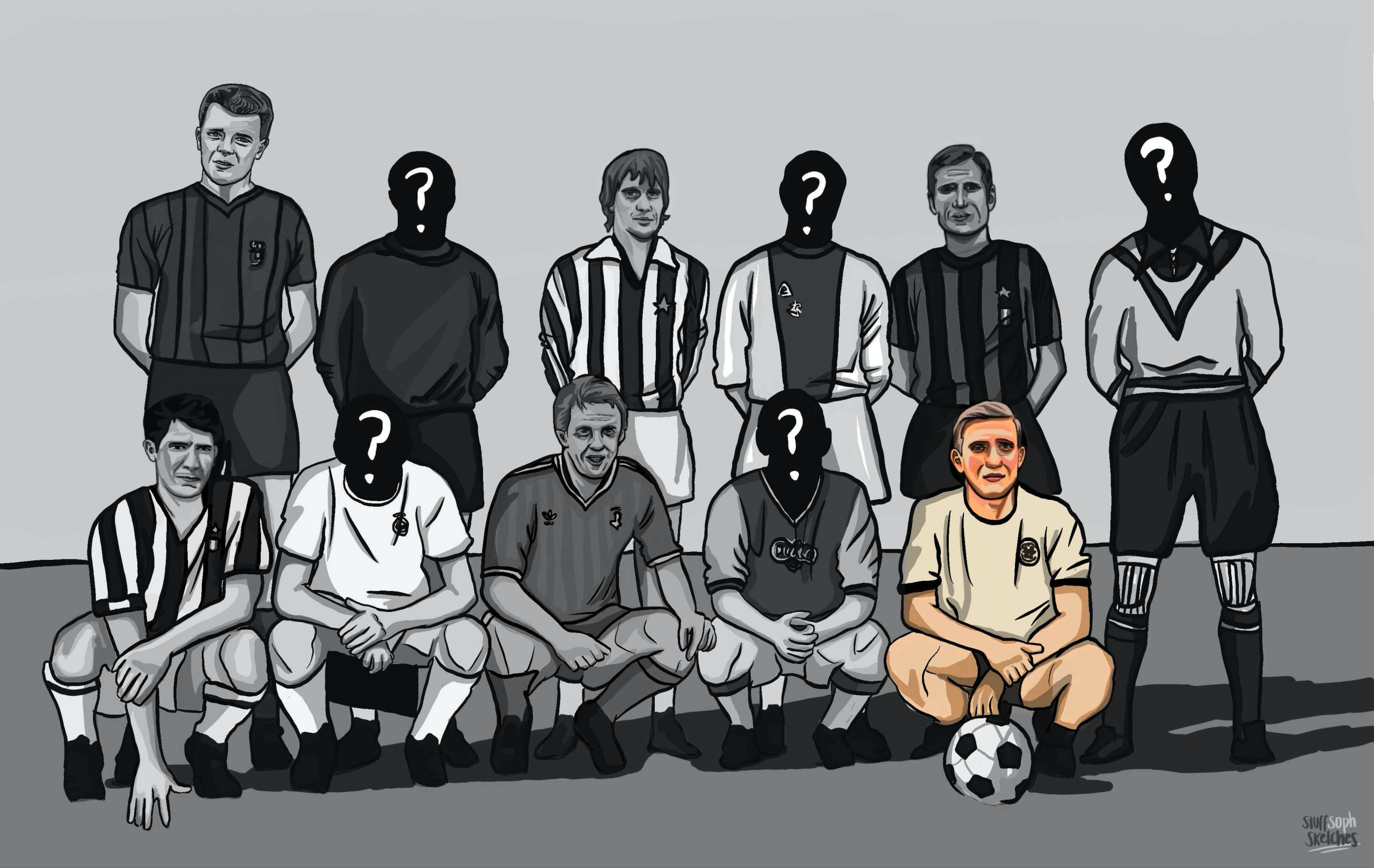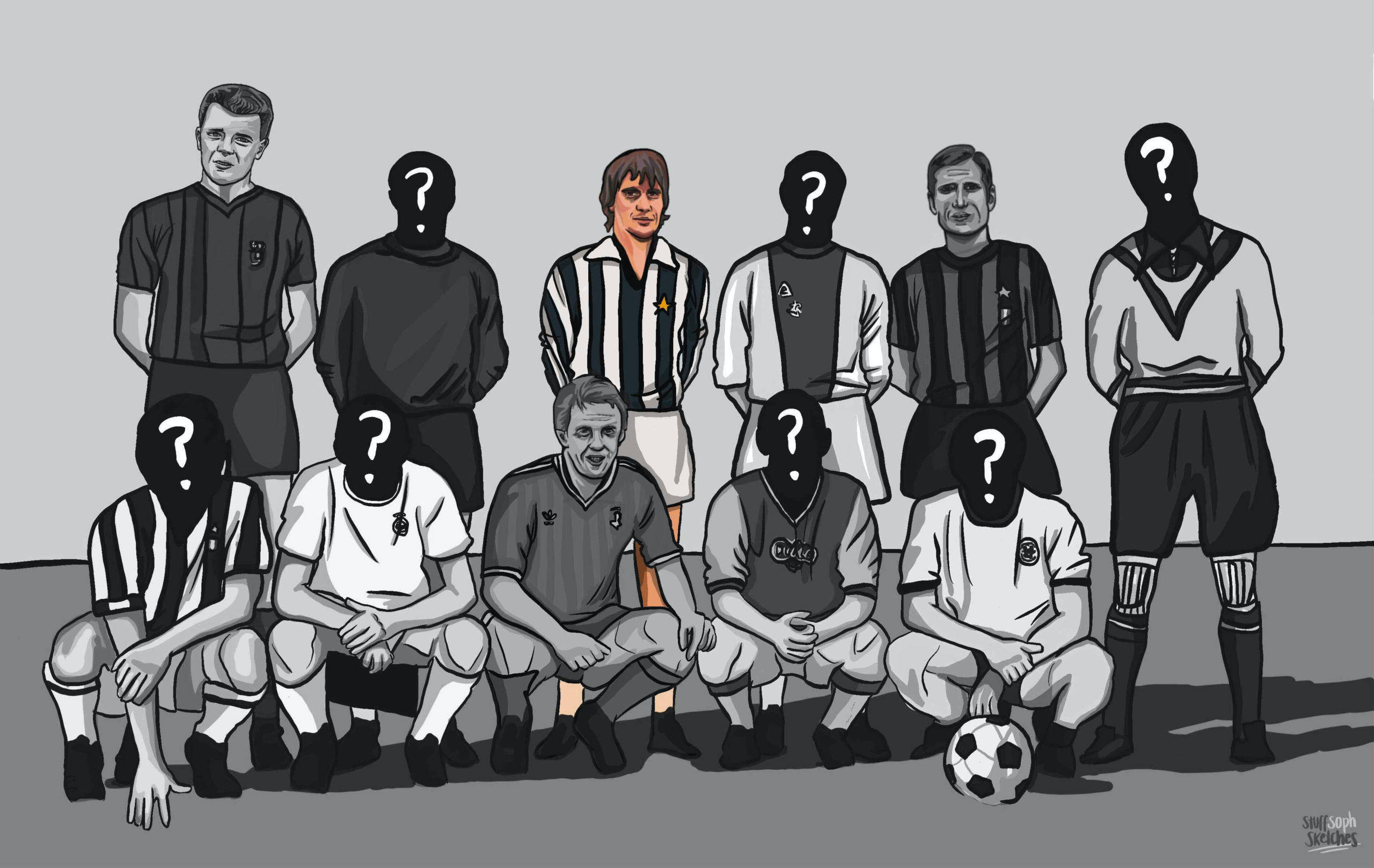Despite being born into a working-class family from Barcelona in February 1901, Ricardo Zamora, whose name still adorns the Goalkeeper of the Year Award in Spain, always considered himself Spanish first and Catalan second. Such a position might go some way in explaining why El Divino (The Divine One) felt more at home playing for Espanyol and Real Madrid than he did for the Catalan giants of Barcelona. Regardless of politics, Zamora is undoubtedly considered one of, if not the greatest, Spanish keepers of all time and is often the standard by which all other goalkeepers are measured. A common saying throughout Spain is that actually ‘there are only two goalkeepers: Ricardo Zamora on Earth and St Peter in Heaven’.
Ricardo’s father had hoped that his son would follow him into the medical profession, however, this boy had other ideas. Whilst at university, Zamora was encouraged to continue to play football by Joan Gamper, the founder of FC Barcelona. Disappointingly for Gamper, it was with cross-town rivals RCD Espanyol that Zamora would begin his career. Young and innocent off the pitch (he supposedly asked a team mate to share a room with him because he was afraid to sleep alone), Zamora made his La Liga debut against Real Madrid, the team he joined fourteen-years later, keeping a clean sheet and dislodging Espanyol’s first-choice keeper in the process.
Zamora kept his would-be executioners (and football enthusiasts) at bay after countless penalty shoot-out competitions as well as regaling them with tales of his playing days.
During his first spell with Espanyol, Zamora won the Campionat de Catalunya (Catalan Championship) in 1918 but he would soon be on the move. As would often be the case throughout his career, Zamora fell out with the club hierarchy at Espanyol and he transferred to Barcelona in 1919. At Barcelona, he won three consecutive Catalan Championships in 1920, 1921 and 1922 as well as two Copa del Rey competitions in 1920 and 1922.
It was during his time with Barcelona that Zamora represented Spain at the 1920 Olympics in Belgium. For some players, helping your country win a silver medal and being sent off after landing a right hook under an Italian forward’s chin would be enough to ensure their place in footballing folklore but Zamora wasn’t finished there. A lover of the good life and sporting himself as a dandy, Zamora smoked three packs of cigarettes a day and enjoyed fine cognac as well as cigars. So much so, that on returning from the Olympics, Zamora was arrested, and the entire squad were held by the police, after he had attempted to smuggle a few crates of Havana cigars back into the country. Zamora had been caught smoking one of the cigars which led to his questioning and subsequent detainment. With the rest of the squad released, Zamora spent a night in the cells before he was given a 500-peseta fine and was forced to give up his contraband.
By 1922, Zamora was on the move again and back to Espanyol. The reasons for his return are debated. Some claim that Zamora’s anti-Catalonian sentiment clashed with the staff at Barcelona and that he could never truly be happy at a club that didn’t consider itself Spanish. Others believe that the move was financially motivated and necessitated by a need to clear his gambling debts. Zamora would again find himself amid conflict with a one-year suspension for tax evasion that cannot be questioned; Zamora lied about his signing on fee when returning to Espanyol, concealing the true figures from the tax man. After his suspension, Zamora remained with Espanyol until 1930, helping the team win the Copa del Rey in 1929 and playing in the inaugural La Liga season that the same year. However, the footballing landscape in Spain would soon change in 1930 after the world record transfer fee that saw Zamora move to Real Madrid for 150,000 pesetas, of which he reportedly received 40,000 himself.
Zamora was the prototype for all subsequent Real Madrid transfers to date. Zamora was well-known, incredibly charismatic and strikingly handsome; in 1978, his ex-teammate Jacinto Quincoces joked in an interview that ‘Zamora was more famous than Greta Garbot, and better looking too!’. In many ways, Zamora was considered a Spanish institution, embodying Spanish machismo and style. Away from football, he lived a bohemian life of excess and revelry. Accompanied by the likes of tango dancer Carlos Gardel, Zamora’s antics as a Barcelona night owl were regularly reported by the local press throughout the 1920s. His goalkeeping outfit – a white roll-neck sweater and flat cap – was also copied by his peers, and although Zamora claimed this was to protect himself and put his opponents off, Jimmy Burns in Barca- A People’s Passion (2009) humorously remarked that it made him look like ‘an Argentine on his way to play polo in an English winter’. Essentially, Zamora was Spanish football’s first media superstar and the first big name to play for both Barcelona and Real Madrid. Songs were penned about him, drinks were named after him, and he even starred in a film called Zamora Weds at Last.
Aside from his image, Zamora was more importantly the best goalkeeper in the world. Zamora joked that he made the move from the racquet game pelota to football simply because the ball was bigger, and he thought it would be much easier to play. He made it look easy according to his contemporaries. Tough and physically imposing, he would always end the match bruised, cut and scratched as he would so often dive at the feet of oncoming strikers. In 1929, he courageously played on despite suffering a broken sternum to help Spain beat England in the first match that they had lost outside of the British Isles. The great Latin American football journalist Eduardo Galeano stated that ‘when forwards faced Zamora, the net would shrink, and the posts would lose themselves in the distance’.
On his debut for Madrid, fans who were desperate to see him play had to be turned away by police. His second game was equally as memorable as he fearlessly dived at the feet of a forward and had to be stretchered off. Without him, Madrid would go on concede seventeen goals in seven games as opposed to the ten goals in eleven games upon his return. With Zamora in goal, Real Madrid won their first and second La Liga titles in the two years that followed (1932 and 1933) as well as the Copa del Rey in 1934 and 1936. It is the second of these cup victories and Zamora’s last match for Real Madrid that helped cement Zamora’s legendary status.
In 1936, Spain was on the eve of a civil war. Written in 1950, the Spanish Football Federation Annual stated that ‘at the 1936 Copa del Ray final, communists turned up on-masse to release their revolutionary hate on Real Madrid’. Zamora was either hit or nearly hit (depending on which account of the event you believe) by a bottle thrown at him from the crowd. Regardless of the hostilities away from the pitch, the final was the scene of Spanish football’s greatest ever save. The final saw Real Madrid and Barcelona face-off against one another in Valencia. Madrid took a two-goal lead and despite them being down to ten men and Barca pulling a goal back, they were hanging on to a 2-1 lead. It hadn’t rained in Valencia prior to the final and the match was played on a dry, dusty surface. With only a couple of minutes to go, Barca’s scorer Escolà powered a shot that looked destined for the net. Zamora dived in puff of smoke and the ball was nowhere to be seen. When the dust settled, Zamora was standing with the ball in his hands and a smile on his face. Moments later, the final whistle went, Madrid had beaten Barcelona to the trophy. ABC reported that the save was ‘inexplicable’ while Zamora boastfully deemed it ‘impossible’ in his own words.
The outbreak of civil war meant that the Copa del Rey final in 1936 was Zamora’s last ever match for Real Madrid. Destined to be remembered as a legend, Zamora’s escape to safety in France during the war was as dramatic as his career. Zamora’s political views were ambiguous at best, leading to both Nationalist and Republican sides claiming him as one of their own. Although in truth, Zamora was probably more of a Nationalist and a supporter of Franco. In the 1950s, he was awarded the Great Cross of the Order of Cisneros after his endorsement of the Franconian regime. At the outbreak of the civil war however, it was still unclear which side he favoured. When ABC news incorrectly reported that he had been killed by Nationalist forces, the leftists reported it as the death of one of their own men. Unimpressed, knowing where he was and who he actually appeared to side with, some Republican forces imprisoned Zamora as they waited to execute him. Zamora kept his would-be executioners (and football enthusiasts) at bay after countless penalty shoot-out competitions as well as regaling them with tales of his playing days. After the Argentine Embassy interceded on his behalf, Zamora and his family sailed from Valencia to France to escape the terror in Spain. Even this escapade would not prove to be without incident. Sporting a beard and dark glasses to avoid being recognised, Zamora was stopped by one of the guards before reaching his get-away car. The guard asked, ‘Hey Zamora, what are you doing with a beard?’. Thankfully, he was allowed on his way and, once in France, teamed up with the great Barcelona player Josep Samitier at OGC Nice, where he ended his playing career.
Ricardo Zamora is as good, if not better, than any goalkeeper that has played before or since. The fact that the award for the Best Goalkeeper in the Spanish league still sports his name is testament to his quality and when you consider the physical demands that goalkeepers at this time had to endure, he probably was as good as people said. When Italy defeated Spain in the World Cup quarter final of 1934, they did so after a replay. The first game had ended 1-1. Italy’s equaliser came about from a corner, which was swung into the penalty area and, as the ball was in the air, Angelo Schiavio punched Zamora in the throat whilst his teammate bundled the ball into the net. Zamora was battered so frequently during the match that he was unable to participate in the replay the following day. Thus, Italy won 1-0 and went on to win the World Cup. Galeano wrote that for twenty years he was clearly the best goalkeeper around. His dominance and bravery between the posts endeared him to all football fans to the point that Republicans and Nationalists fought over him and even his (almost) executioners were won over by his charisma. Compelling, good-looking, and loved by everyone – perhaps it wasn’t just football that seemed to be easy for El Divino.



